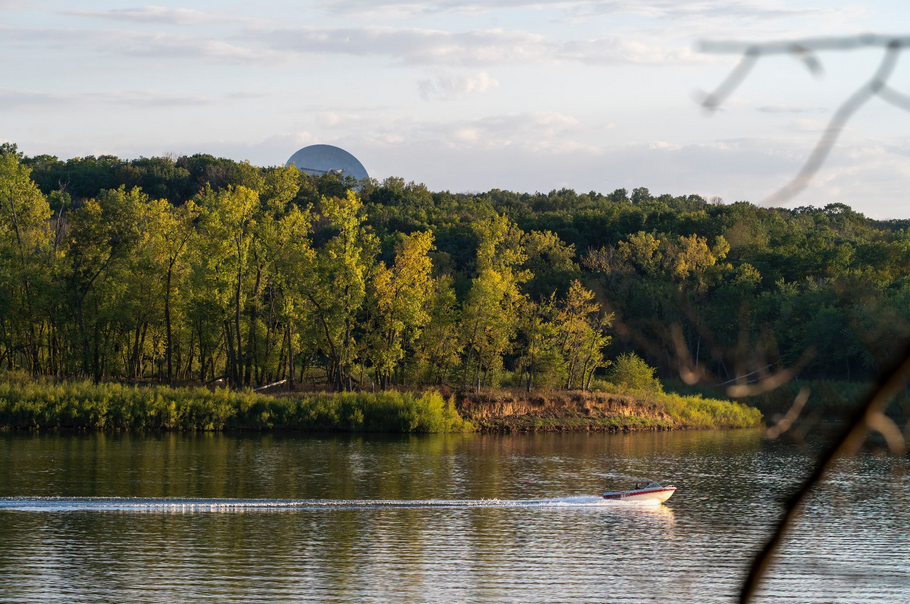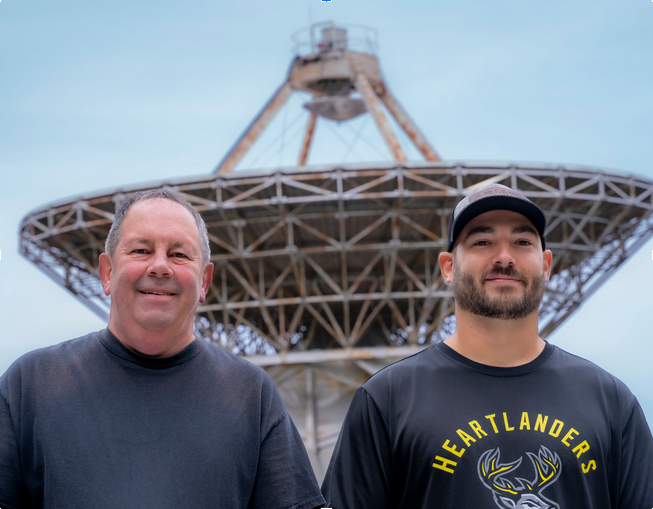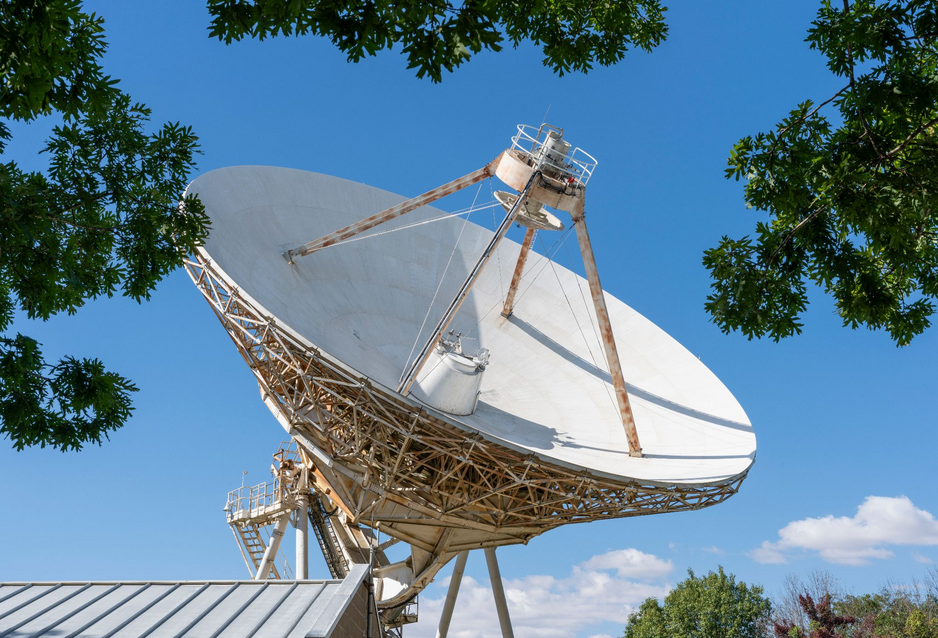Nestled in the woods near North Liberty, Iowa, this antenna can’t be seen from the road, but is occasionally spotted by boaters on Coralville Lake. Surrounded by beautiful woods and water in the eastern part of the state, the site experiences weather that runs the gamut from cold, snow, ice, and wind in the winter, to heat and high humidity in the summer.

The North Liberty telescope is one of 10 radio telescopes that make up the U.S. National Science Foundation National Radio Astronomy Observatory Very Large Baseline Array, which spans 5,351 miles from Hawaii to the Virgin Islands. It is the only NSF VLBA telescope located in the Midwest, making it a crucial component of the array. Like the other NSF VLBA antennas, the North Liberty telescope consists of a 25-meter (82-foot) parabolic dish antenna, which is about as tall as a ten-story building when pointed straight up. Two technicians work at the North Liberty site. Their responsibilities include everything from maintaining sophisticated electrical systems and HVAC systems to performing general maintenance, like mowing the grass.

The University of Iowa played a significant role in the establishment of the North Liberty site. The university’s history with radio telescopes and its involvement in earlier networks using similar technology contributed to the selection of this location. As part of the NSF VLBA, the North Liberty telescope is used by astronomers to explore galaxies, black holes, and pulsars, and measure distant cosmological objects.






